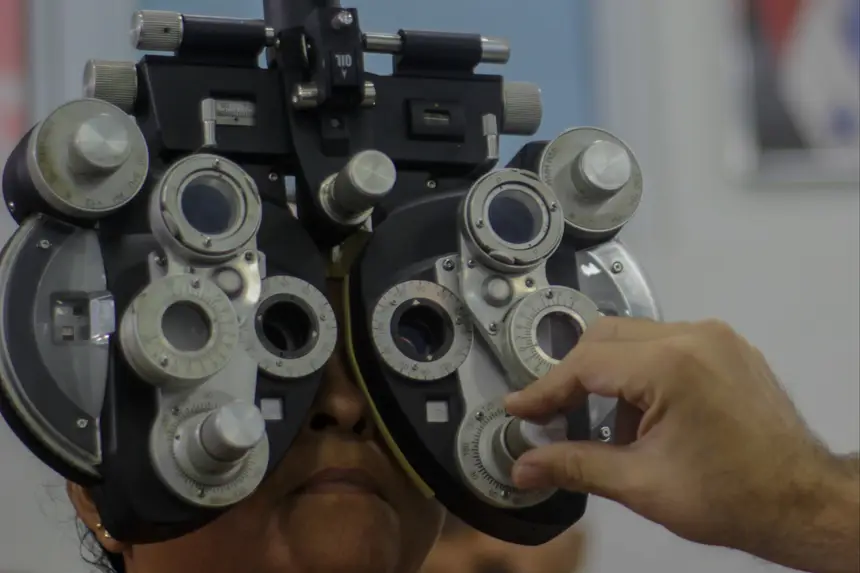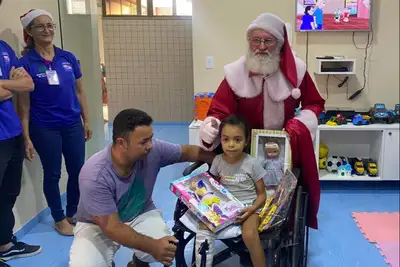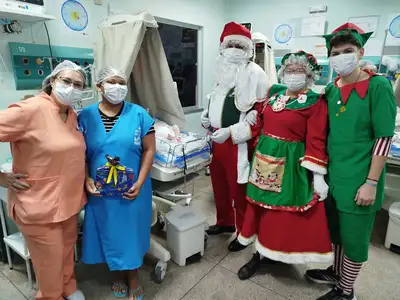Metropolitan Polyclinic warns of the risks of glaucoma, a silent disease that can cause blindness
The unit operates in specialized outpatient care, offering consultations, exams, and initial follow-up for patients with ophthalmological diseases

The Metropolitan Polyclinic of Pará, in Belém, reinforces the importance of early diagnosis and prevention of glaucoma, one of the leading causes of blindness in the world. According to data from the World Health Organization (WHO), about 2% of the Brazilian population over 40 years old may be affected by the disease, which progresses silently and gradually.
Ophthalmologist Pedro Lins, who works at the Polyclinic, explains that glaucoma is a degenerative disease of the optic nerve, the structure responsible for transmitting images captured by the eyes to the brain. "Increased intraocular pressure damages the fibers of the optic nerve, leading to progressive vision loss," warns the professional.
According to the specialist, the evolution of glaucoma is mostly silent. "The patient does not feel pain and does not notice the first signs. When symptoms are evident, visual loss is usually already significant and irreversible," adds Lins.
The professional explained that there are different types of glaucoma. The most common is primary open-angle glaucoma, which evolves slowly and silently. Closed-angle glaucoma, on the other hand, tends to manifest suddenly, with symptoms such as intense pain, redness in the eyes, blurred vision, and, in some cases, nausea.
"There are also rarer types, such as congenital glaucoma, which appears in the first months or years of life and is usually manifested by very large eyes, constant tearing, and sensitivity to light," highlighted the ophthalmologist.
Who should take precautions?
Doctor Pedro Lins explains that glaucoma can affect anyone, but some groups are at higher risk, such as individuals over 40 years old, diabetics, people with a family history of the disease, and those with elevated intraocular pressure.
"People without risk factors should have routine ophthalmological consultations every two years. Those with a family history, advanced age, or other associated conditions need to be evaluated annually or as directed by a physician," recommends Pedro.
Diagnosis and treatment
The diagnosis of glaucoma is made by measuring intraocular pressure, evaluating the optic nerve, and performing imaging tests, such as optical coherence tomography, which allows for high-precision visualization of the internal structures of the eye. "The great challenge is that the patient usually does not notice the initial signs. Therefore, regular follow-up with the ophthalmologist is essential," reinforces Pedro.
Although there is no cure, the disease can be controlled if detected early. "The treatment mainly aims to control intraocular pressure to prevent further damage to the optic nerve," clarifies the specialist. Options include continuous use of eye drops, laser procedures, and, in more advanced cases, surgeries.
The importance of continuous care
Pedro Lins warns of the risks of not treating the condition. "Glaucoma is a disease that slowly and irreversibly steals vision. The patient begins by losing peripheral vision, and if intraocular pressure is not controlled, it can progress to the loss of central vision, leading to total blindness," he points out.
Therefore, the specialist's guidance is clear: the best way to combat glaucoma is through prevention, with regular consultations with the ophthalmologist, especially for those in at-risk groups.
Reference
The Metropolitan Polyclinic operates in specialized outpatient care, offering consultations, exams, and initial follow-up for patients with glaucoma and other ophthalmological diseases. The unit provides accurate diagnosis and initiates treatment when indicated. In cases requiring high-complexity follow-up, such as surgeries, the patient is properly referred to a reference service in the state health network, ensuring continuity of care.
How to access the services
The first appointment at the unit is made through state regulation. After this initial contact, follow-ups and exams can be scheduled directly through the Relationship Center, via WhatsApp Business at (91) 98521-5110, or by email at agendamento.polimetropolitana@issaa.org.br.
For the appointment, it is necessary to present: an official photo ID (preferably RG); CPF; SUS Card; Proof of residence (originals and copies). In the case of children, the birth certificate and the documents of the legal guardian must be presented.









